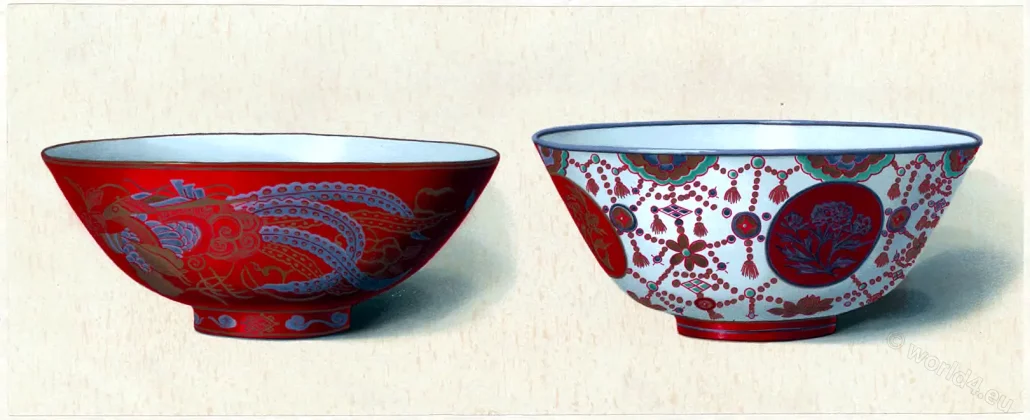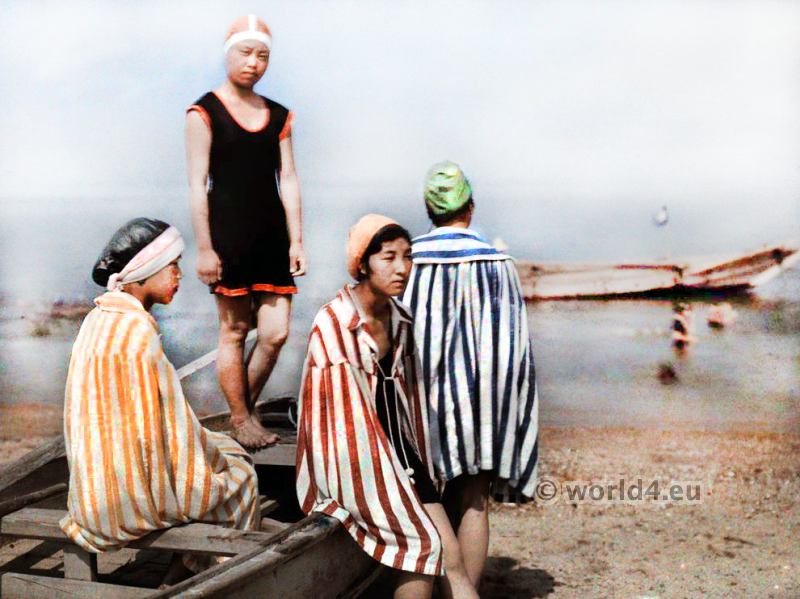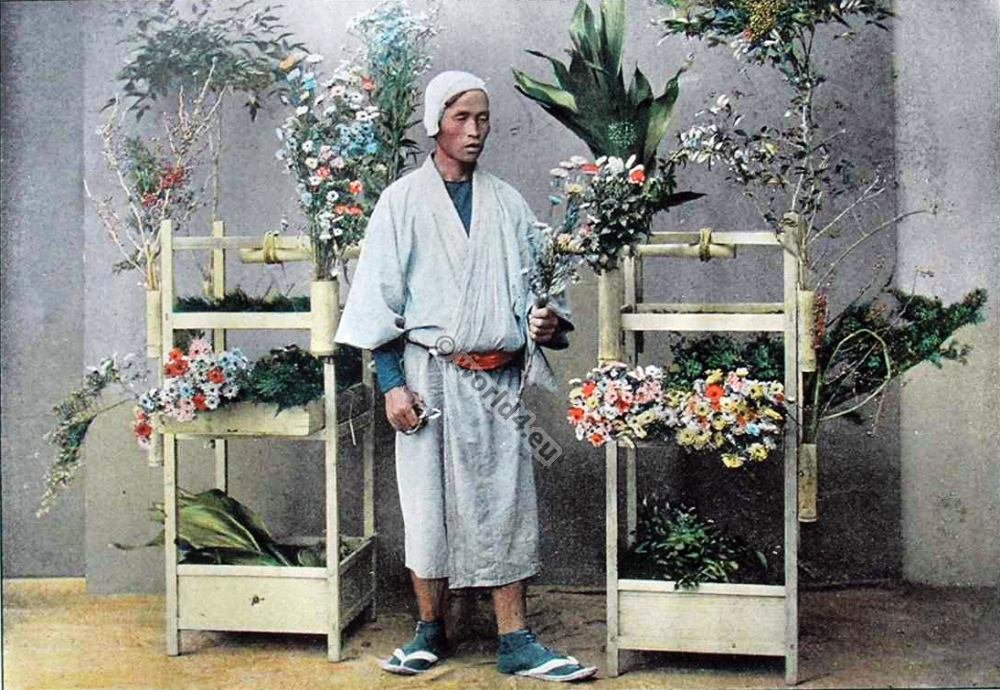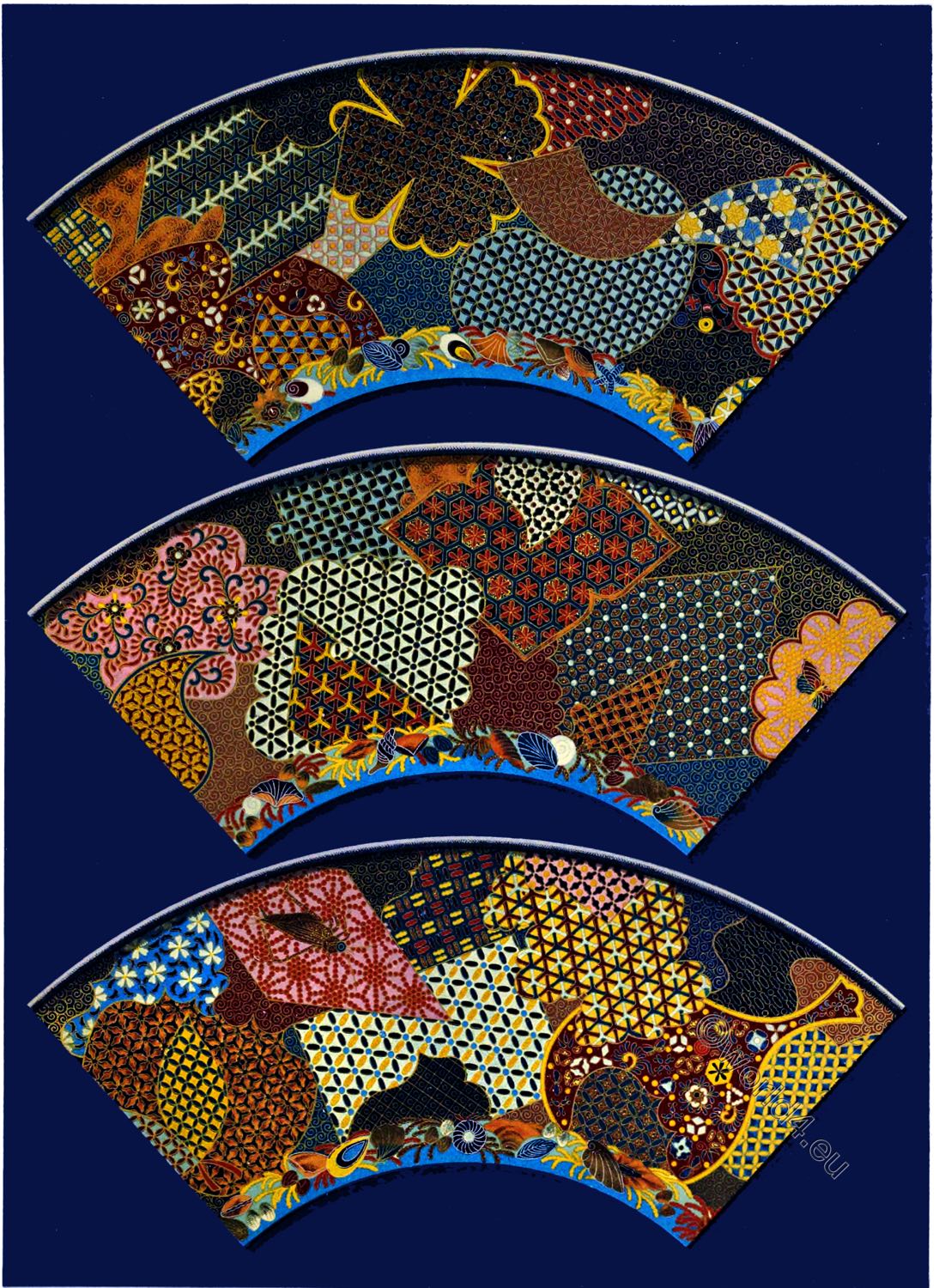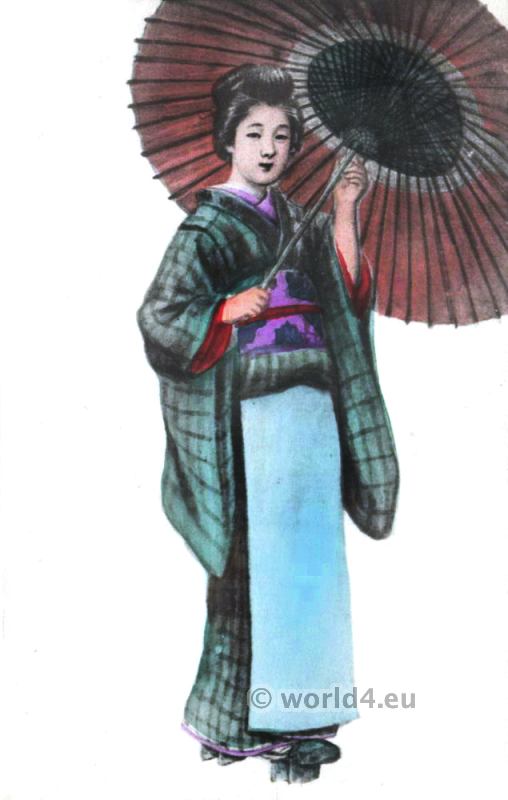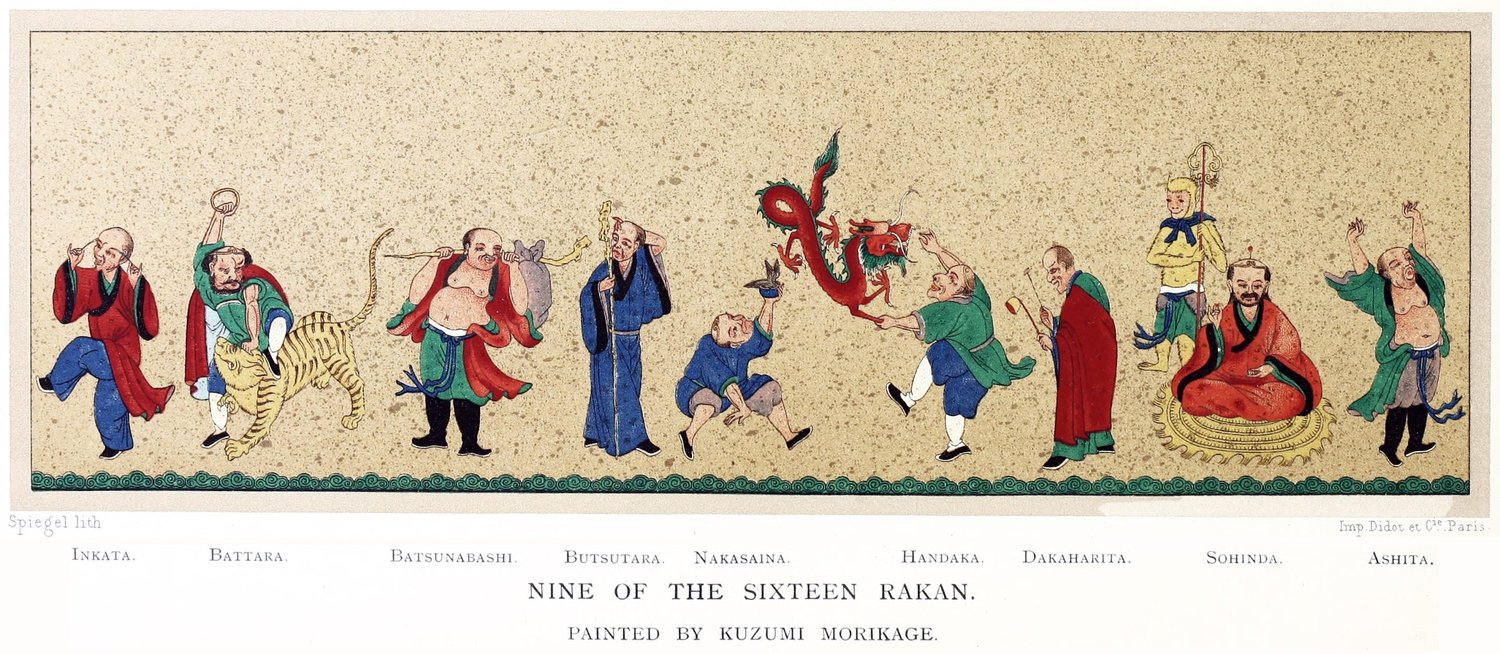KO KUTANI AND AO KUTANI. (Kutani-yaki)
Ko-kutani (old Kutani), from the 17th and early 18th centuries.
Ao-kutani also Saikō-Kutani (Revival Kutani), from the resumed production in the 19th century.
PLATE CIV.
TWO JAPANESE KUTANI RICE-BOWLS
by Stephen Wootton Bushell.
RICE-BOWL (Meshi-Wan), enamelled with a monochrome iron-red glaze of deep vermilion tint, with gilded rings to define the borders, and decorated in gold and silver, with a pair of phoenixes with long, trailing tails, traversing scrolls of the mouton peony wound round a paling, indicated conventionally in the intervals.
The rim of the foot is painted with lozenge-shaped symbols, separated by light scrolls of clouds. The foot is red underneath, the interior of the bowl a greenish white. Date, about 1750.
RICE-BOWL (Meshi-Wan) of thin, translucent porcelain, with the interior moulded in the style of ancient Chinese Tingchou ware, with sprays of lotus, chrysanthemum, aster, and other flowers inclosed in panels, six of foliated outline surrounding the circular panel beneath, and with an encircling chain of rectangular fret— all moulded in slight relief under a glaze of pale celadon color.
The exterior of the bowl is decorated in enamel colours, with gilding, with four round medal-lions containing peonies, alternately green and gilded, in a red ground, and with floral designs in the intervals, connected by a network of beaded strings hung with symbols and tassels.
The foot is enameled red underneath, with a white rim; the thin up is strengthened by a silver collar. Period, 1700-1750.
See: History of Kutani ceramic. Kaga, Japan.
Source: Oriental ceramic art: illustrated by examples from the collection of W. T. Walters, by Stephen Wootton Bushell (1844-1908). L. Prang & Co., lithographer; D. Appleton and Company, publisher, 1897.

